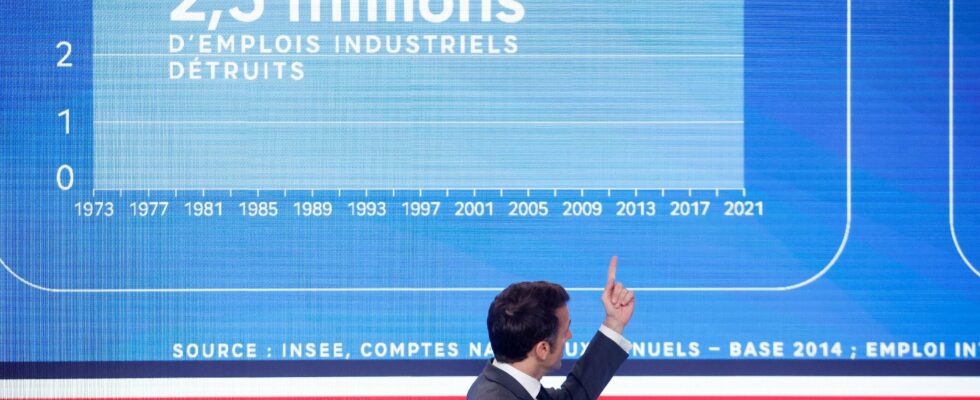We knew the counts of the demonstrations “according to the police” and “according to the organizers”. To measure the reindustrialization momentum touted so much by the executive, Bercy is innovating: from now on, it will be necessary to distinguish the figures “according to Bruno Le Maire” and “according to INSEE”. The Directorate General for Enterprises (DGE), a department of the Ministry of the Economy, has unveiled a new indicator supposed to monitor the evolution of “industrial professions” in France, and not “industrial jobs”, as traditionally done National Institute of Statistics.
The difference ? “Industrial professions” involve “manual actions or the mobilization of skills directly linked to industry” but can be “carried out in industry or services”. An engineer employed in a consulting company, a technician who works in commerce, and presto, here are two more employees engaged in the “mother of battles” dear to Emmanuel Macron. It doesn’t matter if they’ve never set foot on a production line or in an R&D lab.
As could be expected, “the dynamics of industrial professions reveals a more marked and earlier phenomenon of reindustrialization than traditional industrial employment indicators”, affirms the DGE. An example: in 2022, 108,000 job creations in these professions would have been recorded in the country, when INSEE only records 44,000 additional industrial jobs, a modest +1.3% compared to the previous year. Bercy sees double. But in this case, the maneuver seems somewhat like smoke and mirrors.
Battle of barometers
State services are not at their first attempt: in March, the Minister of Industry, Roland Lescure, welcomed the launch of another in-house indicator relating to the net number of openings of factories, including site creations and extensions. A barometer did exist until now, that of the Trendeo firm. But he suffered, explained the minister’s entourage, from “methodological biases”…
This quest for the standard meter is not just a matter for statisticians. To judge the success, or not, of the major presidential project, it will be necessary, at some point, to read the meters. We remember the charge, a few weeks ago, of Bruno Bonnell, the secretary general for investment, against the forecasts of an expert, Olivier Lluansi, although mandated by Bercy. The first considers the objective of increasing the share of manufacturing industry in GDP to 15% in 2030 as “perfectly achievable”. Given France’s strengths and weaknesses, the second considers it more realistic to aim for 12% in 2030. 13%, compared to 10% today, by… 2035.
Colossal challenge
In a study extremely detailed published in mid-May, Bpifrance, the public investment bank, documented the second hypothesis, the most conservative. Verdict? This ambition of 12% of GDP “would imply between 600,000 and 800,000 net jobs created by 2035, or between 50,000 and 67,000 additional salaried jobs per year between 2023 and 2035 (compared to + 32,000 on average per year between 2021 and 2023). Knowing that there are already 60,000 unfilled positions each year and that although the training system trains 120,000 young people per year, only half remain in the industry.”
The challenge is absolutely colossal. And “it will take everyone’s energy not to miss the mark”, conclude very diplomatically the authors of the study – Bpifrance is owned in equal parts by the State and the Caisse des Dépôts.
The thermometers have not finished heating up in Bercy…
.
